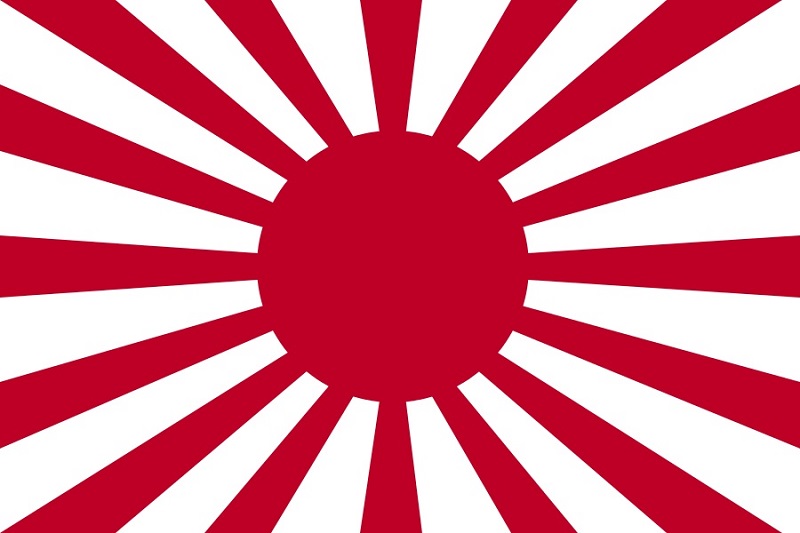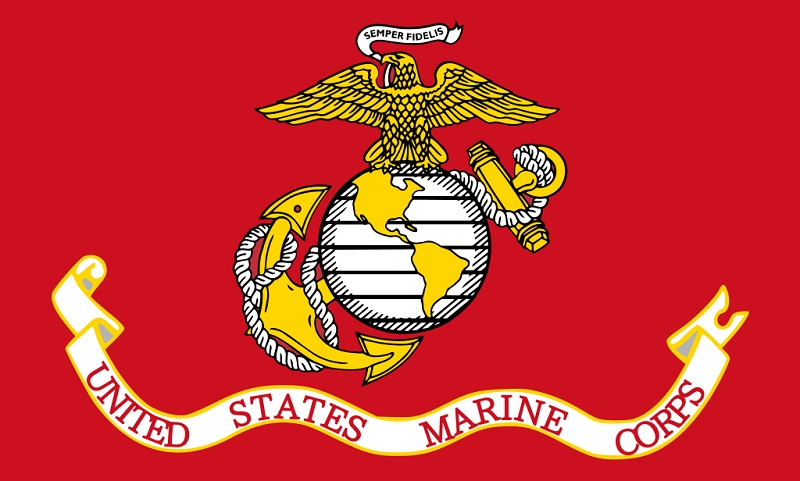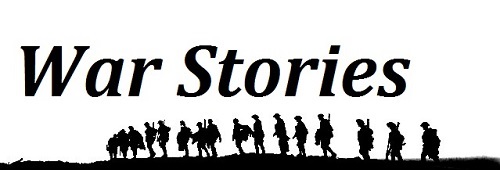War Stories
War Stories
Welcome to War Stories. Here we will be profiling different units, commanders and actions that occurred in modern military history, pulling together information from maps, pictures and videos from across the web. We believe it is important to know the story behind the actions taken in the name of conquest, freedom and self-defense. Without these profiles, the men, machines and weapons become meaningless, lost amidst the shifting sands of time. We hope you enjoy our endeavors.
The Japanese Rising Sun Flag
The Rising Sun Flag (Kyokujitsu-ki) design was originally used by feudal warlords in Japan during the Edo period. On May 15th, 1870, as a policy of the Meiji government, it was adopted as the war flag of the Imperial Japanese Army, and on October 7th, 1889, it was adopted as the naval ensign of the Imperial Japanese Navy. It is still used in Japan as a symbol of tradition and good fortune, and is incorporated into commercial products and advertisements. The flag is currently flown by the Japan Maritime Self-Defense Force and a modified version is flown by the Japan Ground Self-Defense Force. It is viewed as a symbol associated with Japanese imperialism in the early 20th century in South Korea, China, and by some veterans in the United States due to its use by Japan's military forces during that period.

The design is similar to the flag of Japan, which has a red circle in the center signifying the sun. The difference compared to the flag of Japan is that the Rising Sun Flag has extra sun rays (16 for the ensign) exemplifying the name of Japan as "The Land of the Rising Sun". The Imperial Japanese Army first adopted the Rising Sun Flag in 1870. The Imperial Japanese Army and the Imperial Japanese Navy both had a version of the flag; the naval ensign was off-set, with the red sun closer to the lanyard side, while the army's version (which was part of the regimental colors) was centered. The flag was used until Japan's surrender in World War II during August 1945. After the establishment of the Japan Self-Defense Forces in 1954, the flag was re-adopted and approved by the GHQ. The flag with 16 rays is today the ensign of the Maritime Self-Defense Force while the Ground Self-Defense Force uses an 8-ray version.

Flag of the United States Marine Corps
The flag of the United States Marine Corps (also known as the standard or battle color) is the flag used to represent the U.S. Marine Corps, as well as its subsidiary units and formations.
The official flag is scarlet with the Corps emblem in gray and gold. It was adopted on 18 January 1939, although Marine Corps Order 4 had established scarlet and gold as the official colors of the Corps as early as 1925. The indoor/parade version is bordered by a gold fringe while the outdoor version is plain. It measures 55 inches (140 cm) on the hoist and 62 inches (160 cm) on the fly.[2][3] In addition to the multi-colored battle streamers (measuring 3 feet (0.91 m) by 2 3⁄4 inches (7.0 cm) wide) affixed to the top of the staff, the staff itself is covered with sterling silver bands engraved with the names of conflicts in which the Corps has been engaged.
Very little information is available regarding the flags carried by early American Marines, although indications are that the Grand Union Flag was carried ashore by the battalion led by Captain Samuel Nicholas on New Providence Island, March 3rd, 1776. It is quite possible that the Gadsden flag was also carried on this expedition.
The standard carried by the Marines during the 1830s and 1840s consisted of a white field with gold fringe, and bore an elaborate design of an anchor and eagle in the center. Prior to the Mexican-American War, this flag bore the legend "To the Shores of Tripoli" across the top. Shortly after the war, the legend was revised to read: "From Tripoli to the Halls of the Montezumas."
During the Mexican and Civil Wars, Marines in the field apparently carried a flag similar to the national flag, consisting of red and white stripes and a union. The union, however, contained an eagle perched on a shield of the United States and a half-wreath beneath the shield, with 29 stars encircling the entire design. Beginning in 1876, Marines carried the national colors (the Stars and Stripes) with "U.S. Marine Corps" embroidered in yellow on the middle red stripe.

At the time of the Vera Cruz landing in 1914, a more distinctive standard was carried by Marines. The design consisted of a blue field with a laurel wreath encircling the Marine Corps emblem in the center. A scarlet ribbon above the emblem carried the words "U.S. Marine Corps," while another scarlet ribbon below the emblem carried the motto "Semper Fidelis."
Orders were issued on April 2nd, 1921, which directed all national colors be manufactured without the yellow fringe and without the words "U.S. Marine Corps" embroidered on the red stripe. This was followed by an order dated 14 March 1922, retiring from use all national colors still in use with yellow fringe or wording on the flag. Following World War I, the Army practice of attaching silver bands carrying inscriptions enumerating specific decorations and battles was adopted. This practice was discontinued on January 23rd, 1961.
Marine Corps Order No. 4 of April 18th, 1925, designated gold and scarlet as the official colors of the U.S. Marine Corps. These colors, however, were not reflected in the official Marine Corps standard until January 18th, 1939, when a new design incorporating the new colors was approved. The design was essentially that of today's Marine Corps standard.
For a brief time following World War I, the inscribing of battle honors directly on the colors of a unit was in practice, but realization that a multiplicity of honors and the limited space on the colors made the system impractical, and the procedure was discontinued. On July 29th, 1936, a Marine Corps Board recommended that the Army system of attaching streamers to the staff of the organizational colors be adopted. Such a system was finally authorized by Marine Corps Order No. 157, dated November 3rd, 1939, and is currently in practice. Devices are embroidered onto the streamer to denote special recognition or repeat awards. Unlike the Army and Air Force flags, only a single streamer is utilized for a single campaign, with the exception of those streamers that require more than eight devices, the maximum any one streamer may hold. Devices are only authorized for campaigns participated in the 20th and 21st centuries.
|








